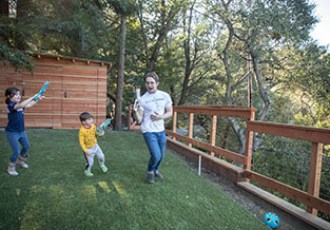BestReviews is reader-supported and may earn an affiliate commission. Details
We recommend these products based on an intensive research process that's designed to cut through the noise and find the top products in this space. Guided by experts, we spend hours looking into the factors that matter, to bring you these selections.

Children have a natural curiosity and easily learn through play. Toys built on STEM principles (science, technology, engineering, and mathematics) give children the opportunity learn about science and math while having an absolute blast.
If you want to buy a STEM toy for that special kid in your life but are having trouble deciding which one is best, you’ve come to the right place.

If you’re going to buy a STEM toy for a child, you most certainly want one that’s appropriate for the child’s age. And of course, you want a quality STEM toy that will hold its own through many usages, making your expenditure worthwhile.
High-quality STEM toys might cost a bit more, but they'll last longer. It's worth shelling out a little extra on a toy that your child will use for years. If you buy a low-quality toy that breaks after a few months or even a few usages, you really aren’t getting your money’s worth.
Before you buy a STEM toy, look at the age range specified by the manufacturer.
Our baby and child expert, Dr. Aimee Ketchum, gives this advice about choosing toys. "It is important to make sure they are age-appropriate. Avoid choking hazards, toys that are too complex for younger children, and toys that are too simple for older children."
Some STEM toys can be enjoyed for years, as they have a wide range of applications both simple and complex.
For example, a child might use LEGO bricks to build a simple house or car at age five. That same child might use that same set of LEGOs to build the Tower of London or the Millennium Falcon at age 12.
Not all STEM toys have the longevity that LEGOs do, and that’s okay. But if you’re interested in a toy that will appeal to multiple age ranges, consider a timeless STEM toy like LEGOs.
Take away the hype and the fancy acronym, and STEM toys are simply educational toys with a focus on the sciences rather than the arts. Here are some of the most common varieties.
Coding toys: These help teach children about coding and range from the very simple to the highly complex.
Robotics toys: You can find kits for building your own robot.
Lab sets: These contain everything required to perform basic chemistry experiments.

Building toys: Building toys (such as LEGOs, K'nex, and Meccano) can provide an introduction to basic engineering.
Astronomy toys: Anything educational that has to do with space could be classed as an astronomy toy, from telescopes to model solar systems.
Electronics sets: You can find some excellent electronics and circuitry toys for kids.
Biology toys: Some toys, such as bug-viewing kits and anatomy models, encourage an interest in biology.

A. Some buyers look at STEM toys and try to figure out exactly what they'll teach their child and how, but it's not always that straightforward. Many STEM toys encourage a range of skills at once. For instance, LEGO bricks teach kids about building and engineering, but they also encourage math skills from an early age, since children will have to count the number of pips on a brick to differentiate it from others.
A. Depending on the toy and the age of the child, some adult supervision may be required. For instance, some chemistry sets require an adult present to keep an eye on things. However, independent play is important for child development, so look for some toys that are safe for kids to play with unsupervised.
Get emails you’ll love.
Learn about the products you’re wondering if you should buy and get advice on using your latest purchases.
